Contents
- Crop Cultivation
- Agricultural Communities
- Festivals/Rituals Related to Farming
- Types of Farming
- Chikoo Farming
- Traditional Agricultural Practices
- Use of Technology
- Market Structure: APMC
- List of APMC markets(as of September 2024)
- Farmers Issues
- Rainfall Patterns
- Industrial Development
- Labor Migration: A Growing Concern for Farming
- Land Prices and Urbanization
- Graphs
- Irrigation
- A. No. of Projects
- B. No. of Ponds/Vilage Lakes and Storage Dams
- C. Irrigation Beneficiary Area vs Irrigated Area
- D. Share of Beneficiary Area Irrigated
- E. Tubewells and Pumps Installed In The Year
- F. Irrigation and Water Pumping Facilities
- Cropping Metrics
- A. Share in Total Holdings
- B. Cultivated Area (With Components)
- C. Gross Cropped Area (Irrigated + Unirrigated)
- D. Share of Cropped Area Irrigated
- E. Distribution of Chemical Fertilizers
- Land Use and Credit
- A. Area of Agricultural Land Holdings (With Size Group)
- B. Size Groups' Share in Total Agricultural Land Holdings Area
- C. No. of Agricultural Land Holdings (With Size Group)
- D. Size Groups' Share in Total No. of Agricultural Land Holdings
- Sources
PALGHAR
Agriculture
Last updated on 6 November 2025. Help us improve the information on this page by clicking on suggest edits or writing to us.
Palghar, nestled along the Arabian Sea, is a district that stands at the crossroads of urban expansion and rural tradition. To its north lies the industrial powerhouse of Gujarat, while to the south, Mumbai (India’s financial and commercial capital) has rapidly transformed into a sprawling urban metropolis, leaving little room for agriculture. Thane, to its east, follows a similar path, and to the west, the sea provides a natural boundary. Yet, despite its proximity to some of India's largest urban centers, much of Palghar retains its rural character, with agriculture deeply embedded in its local economy.
In talukas like Dahanu, Jawhar, Mokhada, and Wada, farming continues to thrive, supported by the district’s fertile landscapes. Rice, millet, fruits, and vegetables flourish here, sustaining local communities like the Vadvals, Warlis, Vanjaris, and Kolis. For generations, these communities have relied on traditional agricultural practices, which have not only supported their livelihoods but also shaped the cultural identity of the region. However, as urbanization gradually spreads, there are growing concerns about the potential impact on this agricultural way of life and the traditions that have sustained it for centuries.
Crop Cultivation
Palghar’s diverse agro-climatic conditions are matched by a variety of soil types, each contributing to the cultivation of different crops. The region is known for a rich mix of soil types and climatic conditions that make it suitable for a wide range of crops. According to a report from NABARD, the district’s soils include Sandy, Red Loamy, Coastal Alluvium, and Laterite soils. These varied soil types, along with the region’s distinct climatic conditions, influence the cultivation of different crops across the district.
Palghar's agricultural landscape is characterized by a rich diversity of crops, with paddy and Nagli (finger millet) emerging as the region's primary staples. These crops thrive in distinct soil types that support their cultivation. Paddy, for example, flourishes in the fertile coastal alluvium soils found in the coastal talukas of Dahanu, Vasai, and Palghar. In contrast, Nagli is best suited to the Laterite soils, which are prevalent in the eastern slopes of the district, particularly in the talukas of Mokhada, Talasari, and parts of Jawhar, as outlined in the NABARD report (2023-24).
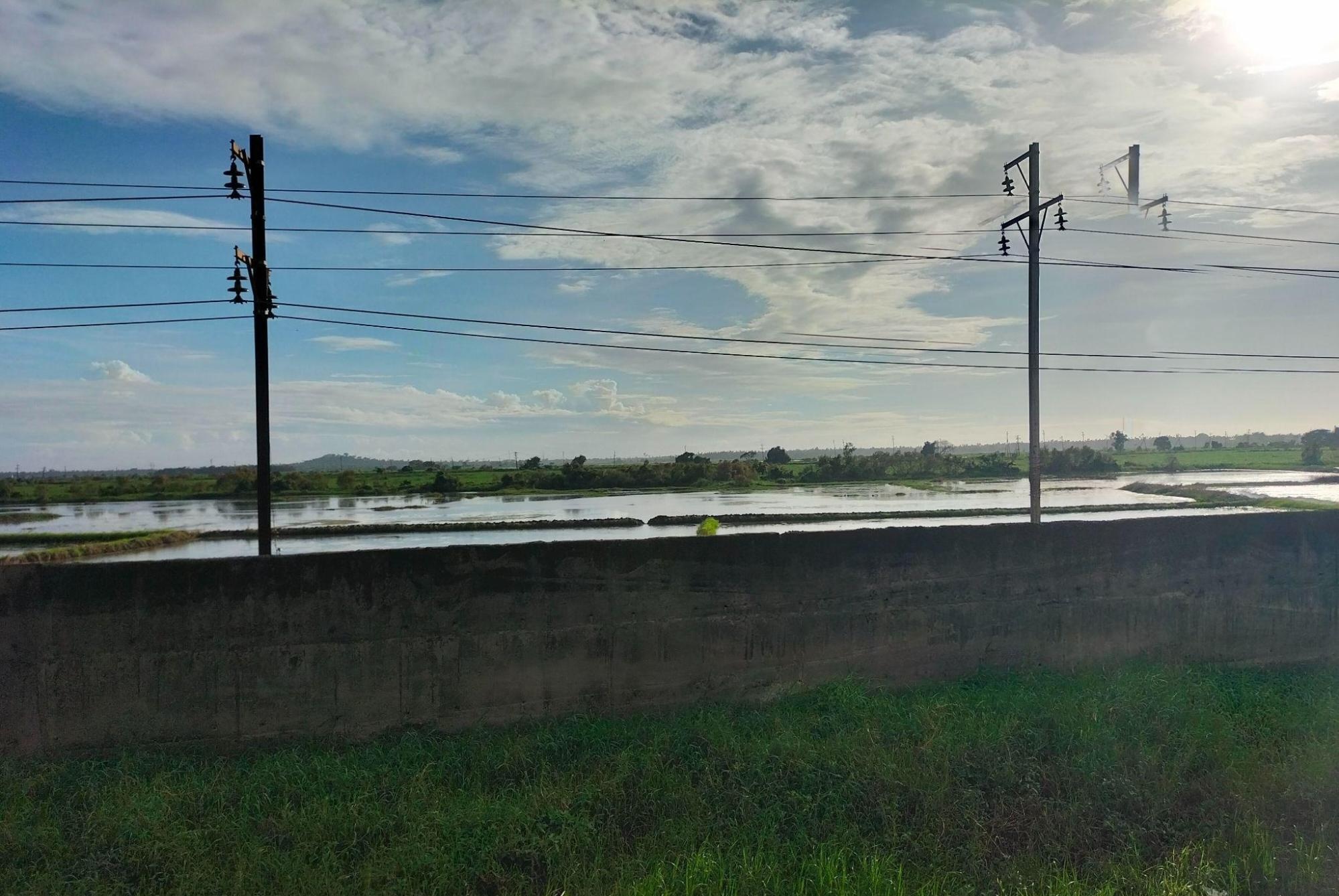
Palghar’s agricultural heritage is deeply rooted in these traditional crops, which have been cultivated for generations. Nagli holds particular importance, especially in the talukas of Jawhar and Mokhada, where communities such as the Warlis, Vadvals, and Kolis, continue to grow the crop. The crop is widely consumed in the form of Bhakri (flatbread) and remains a staple food for many indigenous communities in the region.
Alongside Nagli, other traditional crops cultivated in Palghar include mirchi (chili), tondli (ivy gourd), vangi (brinjal), gawar (cluster beans), bhindi (okra), and a variety of fruits such as banana, black jamburi (black jamun), and jam.
Rice is another key crop in Palghar, with its cultivation playing a dominant role in the region’s agricultural economy. Varieties like Wada Kolam and Kolam rice, grown in Palghar, are highly prized and widely consumed not only within the district but also in regions across Maharashtra, Gujarat, and Goa.
In recent years, Palghar’s agricultural practices have diversified, with farmers adopting new crops to meet changing market demands. Local farmers state that mango, chikoo, lychee, pineapple, and kaju (cashew) are among the modern crops gaining popularity. The introduction of these crops, particularly in areas such as Jawhar, has helped strengthen the district’s agricultural portfolio. Many say that mangoes, in particular, have become highly sought after, with the fruit being marketed not only locally but also across India. Chikoo cultivation, a key economic driver, has also received a boost with the fruit earning a Geographical Indication (GI) tag, highlighting its unique qualities and reinforcing its importance in the region's agricultural landscape.
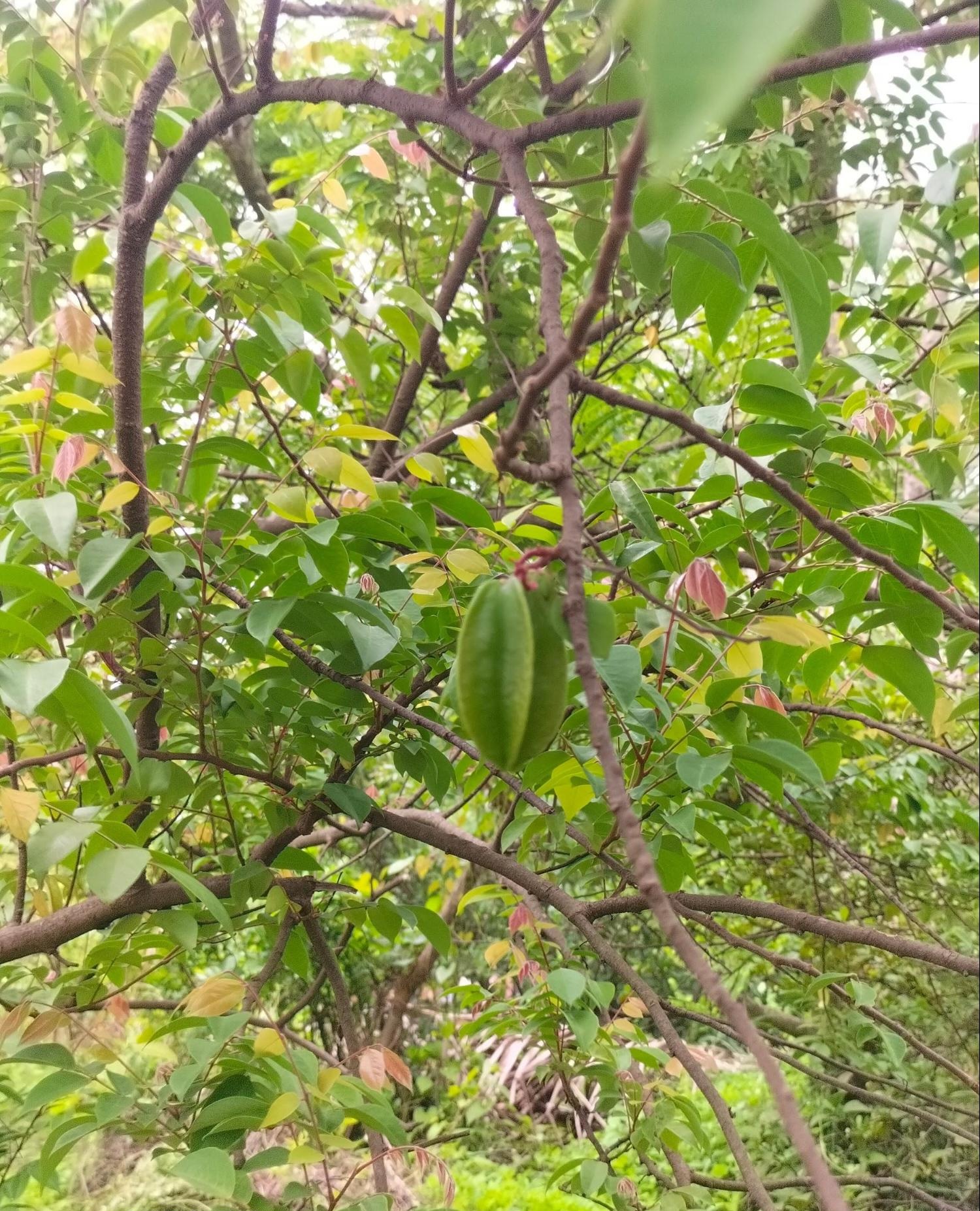
Additionally, Tadgola, a tropical fruit, has found its way into Mumbai’s markets, contributing to Palghar’s growing agricultural diversity. Local farmers also grow Paan leaves, which are consumed both locally and sent to Mumbai. Betel vines are grown along the coastline, thriving due to the region's favorable climatic conditions.
The district's horticulture sector has witnessed significant growth in recent years. The favorable agro-climatic conditions in Palghar make it well-suited for growing a variety of horticultural crops, including flowers. The rise of flower cultivation in the region, particularly varieties like lili, gulab (roses), mogra (jasmine), zendu (marigold), and jaswandi (shoeblack plant), has contributed to the agricultural boom. These flowers are grown on a commercial scale and sold in Mumbai, where demand is high for floral decorations and religious offerings. This booming flower trade is a testament to the growing prominence of horticulture in the district, providing local farmers with a significant source of income.
In addition to mainstream agricultural activities, Tasar silk production has also emerged as a unique agricultural venture in the forest areas of Jawhar, Dahanu, and Vikramgad Talukas. Although on a smaller scale, the cultivation of Tasar silk, which involves the rearing of silkworms on specific types of trees, adds another layer of diversification to the district's agricultural activities. While it is still on a smaller scale, Tasar silk farming is an interesting example of how agriculture and crafts are intertwined in the district’s economy.
Perhaps one of the most striking transformations in Palghar’s crop variety, as local farmers say, has come from the adoption of modern farming techniques. Interestingly, this shift is closely associated with Israel. Many farmers recount how, years ago, some enterprising farmers from the district traveled to Israel, eager to improve their farming methods and yields. They went to learn about advanced farming techniques that have long been praised for their effectiveness, especially in arid conditions.
One of the most notable applications of this technology has been in the cultivation of capsicum (bell pepper). With the aid of greenhouse farming, many local growers claim that Palghar’s farmers have become some of the largest producers of capsicum per hectare in India. For the past 30 to 40 years, notably, areas like Vangaon and Chinchani have been known for cultivating Bhopli Mirchi (a local variety of capsicum) and bell peppers in greenhouses.
This combination of traditional farming practices and modern agricultural technology, as many locals emphasize, has propelled Palghar’s farming community into a new era of productivity and innovation, making the region probably one of the most advanced agricultural hubs in Maharashtra.
Agricultural Communities
Historically, the livelihoods of the many in this district, as locals recall, were rooted in two key sectors: fishing and agriculture. Palghar is known for its marine produce. Fishing communities thrived along the coastline, while farming communities tended to the land, cultivating the crops that sustained them. Koli, Vadval, Chandraseniya Kayastha Prabhu, Bhandari, Kunbi, East Indian, and Catholic communities have long been associated with farming, with rice historically being a staple crop in both their diet and cultural practices.
In recent years, rice cultivation has predominantly been carried out by communities belonging to Scheduled Tribes (STs). While rice farming was once practiced by various communities, today it is primarily associated with ST communities. Nagli, a type of millet, is also grown exclusively by these communities and is an important part of their diet.

The agricultural system in the district remains largely labor-intensive, with minimal use of modern technology. This is primarily due to the small scale of most farms, where mechanization would be financially unfeasible. Many local farmers operate small-scale farms, where the cost of machinery would outweigh its benefits.
Contractual farming, which has gained popularity in other regions, has not seen widespread adoption in the district. While some farmers may engage in contract farming, it remains a minority practice. Agriculture in the district is generally year-round for many crops, such as bhajipala (green leafy vegetables), which are cultivated continuously. However, rice farming follows a seasonal cycle, with an off-season during which many workers seek alternative sources of income. A significant number of rice farmers supplement their earnings by working as laborers in construction, secondary industries, or catering services.
The labor force is predominantly local, with most workers coming from ST communities in the Vikramgad, Jawhar, and Mokhada talukas. Many of these workers reside within the same taluka, contributing to a local, community-based agricultural workforce that remains engaged in various forms of employment throughout the year.
Festivals/Rituals Related to Farming
In Palghar, farming is not just a livelihood, it’s a vital part of the district’s cultural identity, reflected in several festivals and rituals that celebrate its agricultural heritage. Among the more recent additions to the local calendar is the Chikoo Festival in Dahanu, which highlights the region’s chikoo crop, a major agricultural product. Alongside it, events like the Dahanu Beach Festival, Kelva Beach Festival, and Wada Tandool Festival have been introduced. These festivals not only promote local farming practices but also attract tourism, encouraging farmers to experiment with modern cultivation methods.
However, even as these modern farming festivals gain popularity, traditional customs continue to play an essential role in the agricultural practices of Palghar. So deeply intertwined are farming and cultural life that many local communities, influenced by pantheistic traditions, revere devtas/devis whose identities are intrinsically linked with food and agriculture. Among these, Anna Devta (the devta of food and agriculture) holds a central place.
Anna Devta is revered primarily by the indigenous communities in the region, who believe that the devta protects the crops and ensures a bountiful harvest. One of the most important traditional rituals associated with Anna Devta is the Khala, an annual ceremony where the first fruits of the harvest are offered in gratitude to the devta. Cops like Kakdi (cucumber), Valuk (a variety of beans), Wamba (wild yam), and Chavali (rice) are presented to Anna Devta during this special aarti (prayer ceremony) as a mark of respect. It is only after this offering that the people partake in the harvest, perhaps depicting their recognition of the divine connection between their livelihoods and the land.
However, as modernization and mechanization have crept into the region, they have left a mixed impact on these traditional agricultural practices. While new festivals like the Chikoo Festival flourish in Palghar, some older customs, such as Pola, a festival once dedicated to honoring livestock, are gradually fading. Locals attribute this shift to the rise of mechanized tools like mini tractors and power tillers, which have replaced animals in the fields. Consequently, this once-vibrant festival, which celebrated decorated bullocks and their vital role in plowing, is becoming less common. This change reflects a broader trend: as the agricultural landscape evolves, so too do the customs that were once central to the region's cultural identity.
Types of Farming
Palghar, is located in the coastal Konkan region of Maharashtra, which is known for its fertile soil and tropical climate, making it ideal for diverse agricultural activities. Rice, particularly the Wada Kolam variety, is the staple crop, along with other important cultivars like Nagli (millets), brinjal (aubergines), and various vegetables. The region’s heavy rainfall and rich soil have also paved the way for the cultivation of high-value crops, including chikoo (sapodilla), which has grown to become a major agricultural asset of the region.

Chikoo Farming
In the coastal villages of Palghar (particularly Bordi, Gholvad, and Dahanu), the chikoo, or sapodilla, has become a key part of the local economy and culture. While not native to India, this tropical fruit has flourished in the region for over a century, shaping the livelihoods of countless farmers and carving a niche for itself in India’s agricultural landscape.
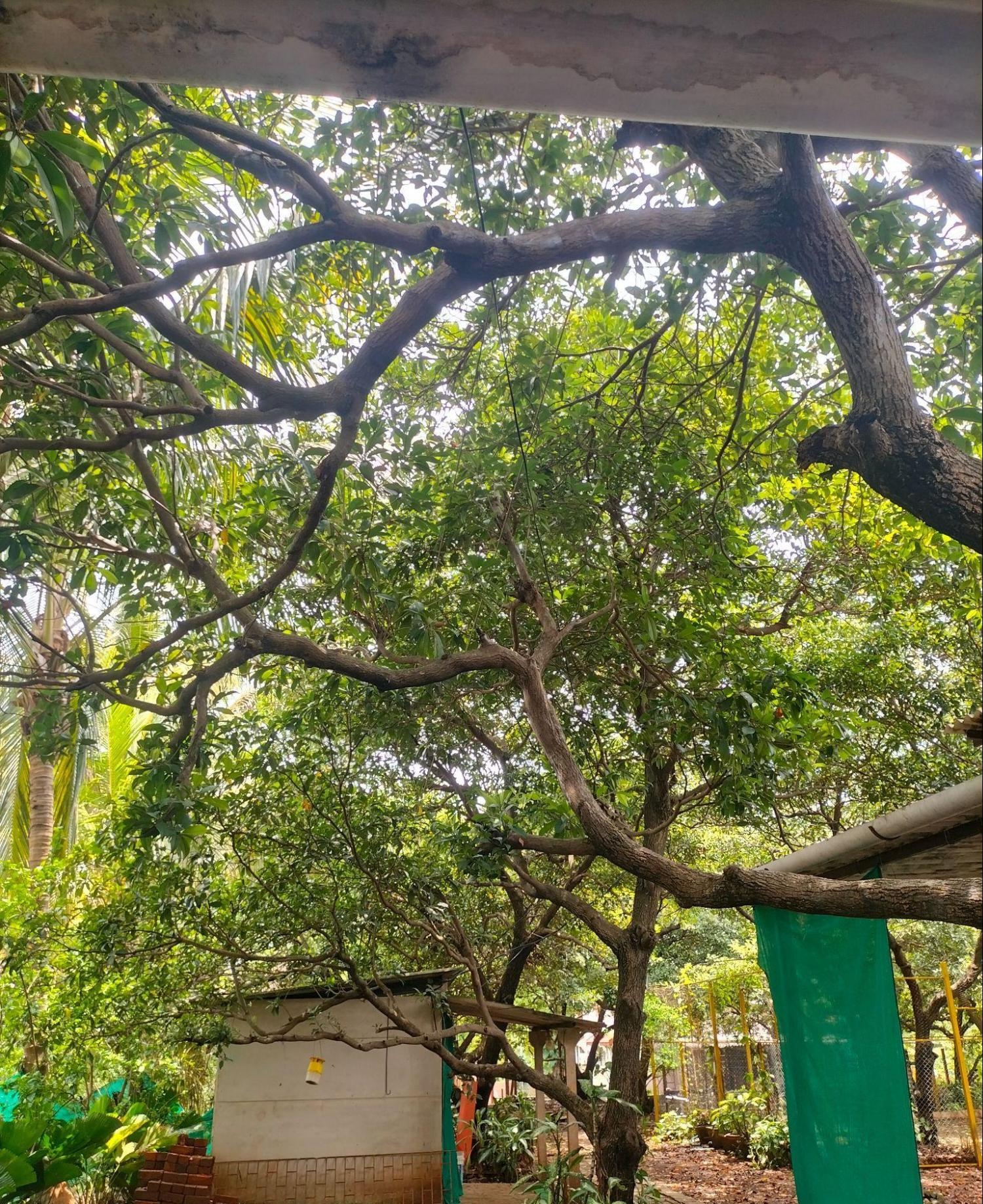
The story of chikoo in Palghar is said to have begun with Seth Bomanjee Dinshaw Petit, a Parsi businessman and philanthropist of late 19th-early 20th century Bombay (from the noted Petit family; his niece Rattanbai Petit was the wife of Muhammad Ali Jinnah). During a trip to Central America, Petit came across the sapota tree and, fascinated by its potential, brought saplings back to India. Initially planted in his Mumbai garden, the trees were soon relocated to his orchard in Gholvad, a village in Palghar, due to space constraints. When the trees finally bore fruit, Petit's estate manager sent a batch to Mumbai’s Crawford Market, where the sweet, unfamiliar fruit was met with unexpected enthusiasm. As Khursheed Dinshaw recounts in her article "In India, the Chikoo Fruit Spreads Its Sweet Legacy" (2022), this marked the beginning of chikoo's thriving legacy in the region.
The success of the fruit in the market sparked a larger-scale cultivation of chikoo in the surrounding areas. By the early 20th century, the Irani community in Gholvad and Dahanu had fully embraced the cultivation of chikoo. The region’s tropical climate, with its rich soil and moderate coastal temperatures, proved to be ideal for the growth of this hardy fruit. Today, Gholvad chikoo is even recognized with a Geographical Indication (GI) tag, reflecting its distinct quality and global recognition.
However, the story of chikoo farming in Palghar has not been without its challenges. In the 1940s, a devastating storm swept through the region, destroying large swaths of chikoo orchards. The storm exposed a critical vulnerability in the chikoo tree: its shallow root system, which left it prone to uprooting in high winds. Faced with the destruction, farmers needed a solution.
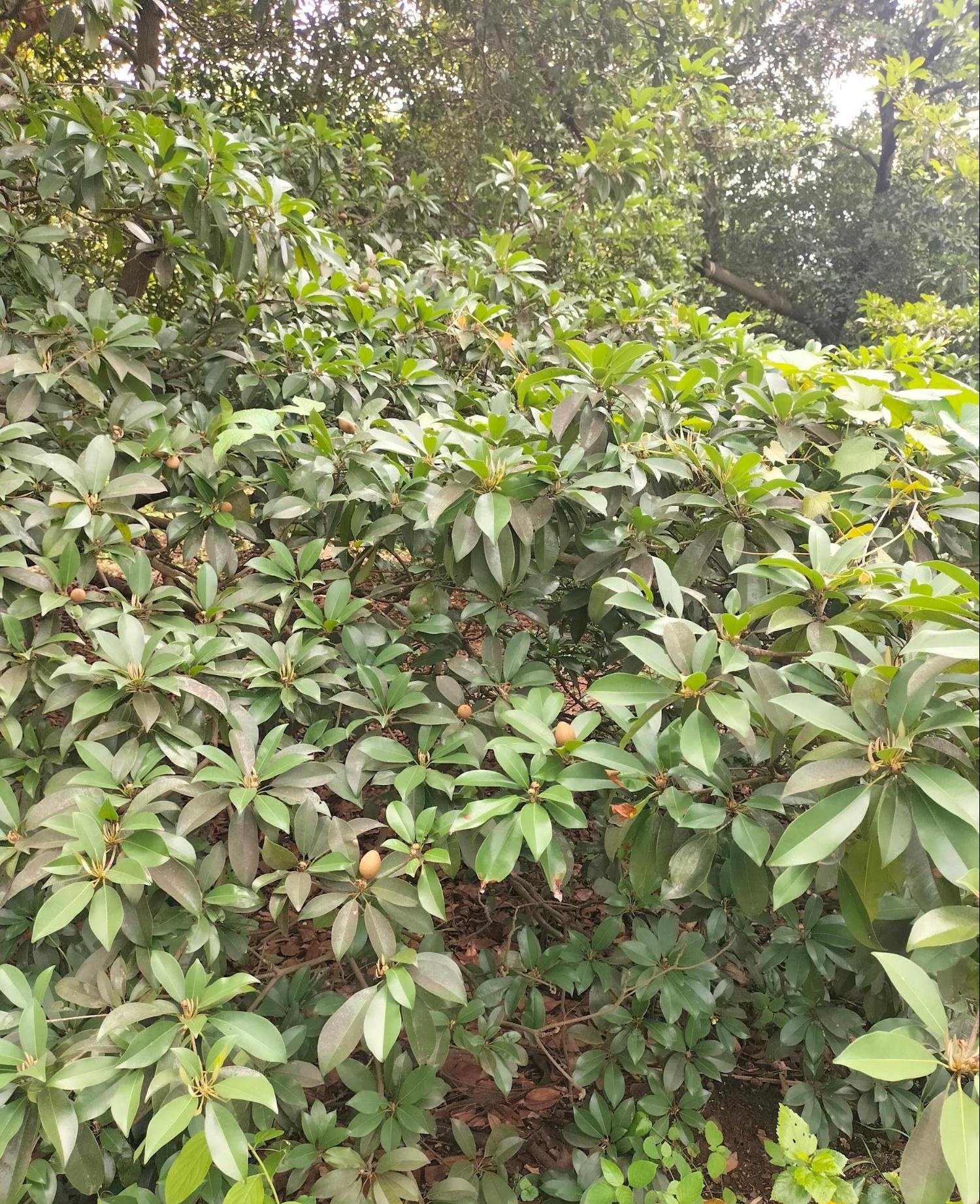
According to Khursheed Dinshaw's article, the solution came from Merwan Khodadad, a local farmer from Dahanu, who found an innovative way to address the problem. Khodadad experimented with grafting chikoo branches onto the rootstock of a rhyne tree, a species known for its strong root system and sap similar to chikoo. This grafted version of the tree proved to be more resilient to storms, offering a solution that could withstand the weather-related challenges faced by farmers in the region. This unique graft, now known as the rhyne chikoo, became a local standard, and its widespread adoption helped secure the future of chikoo cultivation in Palghar.
As chikoo farming became more established in the region, farmers began to focus on increasing its value. In the 1990s, Sharda Gajanan Patil, a local entrepreneur, saw an opportunity to add value to the fruit. After attending a seminar on fruit processing, Patil began experimenting with turning chikoo into products like chips, powder, chocolates, and pickles. In 1996, she founded the Amrut Madhuri Women Mandal, a cooperative that trained local women to process and market these value-added products. Through Patil’s efforts, the cooperative grew rapidly, offering farmers a more profitable market for their crops while simultaneously providing women in the region with new economic opportunities.
Today, Palghar is one of the world’s largest producers of chikoo, with around 5,000 hectares of land dedicated to its cultivation. The region is renowned for its high yields, and during peak season, it is said that over 400 tons of chikoo are harvested every day. Chikoo trees, which take five years to mature, can bear fruit for up to 35-40 years, ensuring a long-term source of income for local farmers.
Chikoo farming in Palghar has grown far beyond a simple agricultural practice. It has become a measure of resilience, innovation, and collective effort. What began as an exotic import has now woven itself into the very fabric of the region, shaping not only the local economy but also the culture and identity of its people.
Traditional Agricultural Practices
In Palghar, traditional agricultural practices were deeply intertwined with the natural environment. Farmers, especially from the indigenous communities and the Vadval community, have long relied on labor-intensive methods, suited to the region's water-rich environment.
One of the core elements of traditional farming was the use of Rahats and Bhands for irrigation. Rahats are water-lifting devices, powered by oxen or human effort, to draw water from nearby rivers or wells. They were essential for providing water to fields, particularly when rainfall was insufficient. Additionally, Bhands were small canals created to divert water from rivers or streams, especially during the monsoon season, ensuring that crops received consistent irrigation.
These traditional methods helped shape the agriculture of Palghar, with rice farming being a major crop. Despite the shift towards modern techniques, these practices remain an important part of the district’s agricultural heritage, still valued and used by many farmers today.
Use of Technology
Agriculture in this region has long been labor-intensive, with farming methods relying heavily on manual effort. However, over the years, farmers have begun adopting various tools, machines, and technologies to improve productivity and efficiency.
Perhaps, one of the most notable changes in Palghar’s agricultural practices, as many say, was brought about with the introduction of Israeli farming techniques in areas like Vangaon and Chinchani. Local farmers recall that years ago, a few agriculturalists from the region traveled to Israel, learned new techniques, and brought their knowledge back to apply here. By adopting methods such as greenhouse farming and shade-net technology, farmers have seen significant growth in crops like Bhopli Mirchi (a type of chili) and Bell Peppers. Many local farmers credit these innovations with helping them become some of the largest producers of these crops over the past 30 to 40 years.

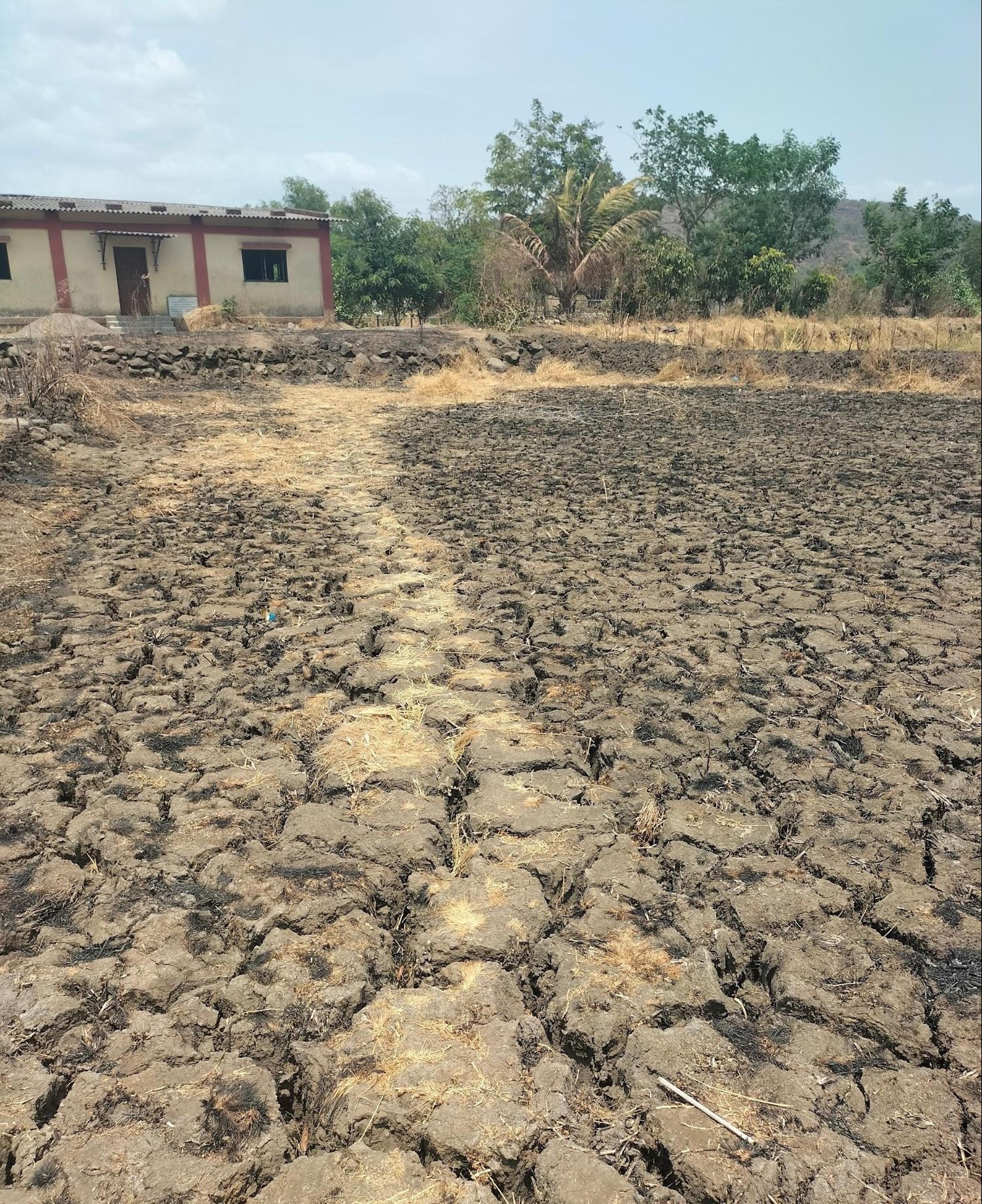
While technology has played a key role in diversifying crop varieties and improving their success, rice farming tells a different story. Although power tillers and mini-tractors have replaced livestock for certain tasks over the past few decades, much of the work is still done manually. Many farmers point out that the uneven geography of the land makes it difficult to implement large-scale technology.
With most rice fields being small and labor shortages on the rise, investing in expensive technology often doesn't seem practical. As a result, many farmers say that fewer young people are interested in continuing rice cultivation, and many communities once tied to this practice are becoming increasingly alienated. This trend is also one of the reasons, as many suggest, that it's increasingly the Scheduled Tribe communities who are taking up rice farming, as they are relatively more willing to engage in the labor-intensive work required.
Market Structure: APMC
According to the Maharashtra State Agricultural Board website, there are three Agriculture Produce Marketing Committees (APMCs) in Palghar, located in Beur, Vasai, and Dahanu. The largest APMC in the region appears to be in Beur (Palghar taluka), where a variety of agricultural products such as paddy, wheat, maize, fruits like mango and guava, vegetables including onions and tomatoes, and livestock are traded.
List of APMC markets(as of September 2024)
|
Sr. No |
Name |
Est. Year |
Chairman |
|
1 |
Vasai |
1960 |
Ashok Augustine Colaco |
|
2 |
Palghar (Bevur) |
1960 |
Anil Madhavrao Gawad |
|
3 |
Dahanu |
2001 |
Aanand Rajendra Thakur |
Locals mention that while Vasai hosts three submarkets designed to provide facilities for farmers to sell their produce, these submarkets are often not very active, with limited arrivals of agricultural products. As a result, many farmers report selling their produce directly to traders at prices that are often below the Minimum Support Price (MSP). During the harvest season, the APMC does allow for the operation of Paddy Procurement Centers, managed by Primary Agricultural Credit Societies (PACS), but this is primarily focused on paddy.
It is also pointed out that the nearest fully functional APMC is located in Vashi, Navi Mumbai, which is quite far for many farmers in Palghar. According to locals, they feel the current APMC setup is not serving their needs effectively. One of the key demands voiced by farmers is the establishment of a more accessible, functional APMC closer to Palghar, to improve market access and ensure fairer pricing.
Farmers Issues
Rainfall Patterns
In Palghar, as in many parts of the country, rainfall isn't just about when the monsoon arrives, but how it is spread out across the season. Farmers here rely heavily on consistent rainfall throughout the monsoon to ensure healthy crop growth.

Recent studies, including data from the Indian Meteorological Department (IMD), reveal a significant increase in annual rainfall over the years in Palghar. Although the increase in annual rainfall may initially appear beneficial, especially when compared to the recurring drought conditions across several districts in Maharashtra, it does not necessarily result in improved agricultural conditions. While this rise in rainfall may initially seem advantageous, particularly in contrast to the recurring drought conditions observed across several districts in Maharashtra, it does not necessarily translate into better agricultural outcomes. The critical factor is not just the total volume of rainfall but its distribution throughout the season.
Local farmers in Palghar report an uneven rainfall pattern, with prolonged dry spells and extended intervals between rainfall. These gaps disrupt crop growth and negatively impact yields, particularly for flowers, vegetables, and grains. On the other hand, excessive rainfall can cause its own set of problems. Fields, especially in low-lying areas, face waterlogging, leading to root rot, fungal diseases, and delayed harvests, which in turn affect the agricultural cycle. These shifts in rainfall patterns are likely having a direct effect on farming practices and agricultural productivity in Palghar.
Industrial Development
Perhaps, the most significant adverse effects on farming in Palghar can be attributed to pollution from its growing industries. The agricultural landscape of Palghar has undergone significant changes, largely driven by the rapid industrialization and urbanization in the region. With growing urban centers like Virar, Vasai, Dahanu, Boisar, and Nallasopara, agricultural land is increasingly being replaced by industries and residential developments. The shift from agriculture to industrialization in this area has raised concerns about its long-term impact on the region's agricultural productivity.
A primary concern raised by local farmers in Palghar is the impact of the thermal power plant in Dahanu, originally established by Bombay Suburban Electric Supply (BSES). Farmers have increasingly pointed to emissions from the plant as a contributing factor to soil degradation, which in turn is negatively affecting crop yields and overall agricultural productivity. The pollution stemming from this plant has become a growing issue, with its effects becoming more evident in the region's agricultural landscape.
In 1991, Dahanu was designated as an eco-sensitive zone due to its unique biodiversity and the growing environmental concerns linked to industrial activities. Dahanu was one of only three regions in India to be classified as ecologically fragile at that time. However, despite this designation, industrial development in the region continued largely unchecked, leading to increased environmental degradation, as highlighted in environmental reports such as Mongabay.
In response to mounting concerns, the Dahanu Taluka Environment Protection Authority (DTEPA) was established in 1996 following significant advocacy by environmental organizations. However, industries that were already operational before the establishment of the DTEPA, including the thermal power plant, were largely unaffected by the regulatory framework. These pre-existing industries likely continue to be major contributors to the region's pollution levels, which remain a serious concern for local farmers.
Recent studies in Dahanu have revealed alarmingly high levels of air pollution, particularly about particulate matter (PM2.5), which exceed permissible environmental limits by a wide margin. Such high pollution levels are especially detrimental to sensitive crops, such as chikoo, which is particularly vulnerable to changes in air quality. A 2022 article titled “Study Shows Alarmingly High Pollution Levels in Dahanu’s Eco-Fragile Area” reports that farmers have observed a significant rise in the incidence of ‘black fungus’ on chikoo trees, a condition that causes premature fruit drop and exacerbates the already difficult situation for local agriculturalists.
Labor Migration: A Growing Concern for Farming
In addition to pollution, another pressing issue is the migration of labor from agriculture to industries. As farming becomes more labor-intensive and less profitable, young people in the region are increasingly seeking employment in industrial and service sectors. This migration is further depleting the already limited agricultural workforce, a trend that is expected to continue, not just in Palghar, but across neighboring districts as well.
Land Prices and Urbanization
Urbanization has led to a surge in land prices in the region, prompting many farmers to sell their land to developers. Faced with diminishing returns from agriculture, many choose to sell their land rather than continue farming. Former agricultural hubs like Wada, Virar, and Palghar are now bustling commercial and residential areas, further reducing the region’s agricultural capacity.
While industrialization has driven economic growth in the region, it has come at a steep price for farming. Climate change, pollution, labor shortages, and urban expansion are all taking a toll on the agricultural community, leaving farmers in Palghar grappling with challenges that threaten their livelihoods and the very identity of the region’s agriculture.
Graphs
Irrigation
Cropping Metrics
Land Use and Credit
Sources
Department of Environment, Forests and Wildlife. 1991. Notification: RESTRICTIONS ON THE SETTING UP OF INDUSTRIES IN DAHANU TALUKA, DISTRICT THANE (MAHARASHTRA). Govt. of India. MINISTRY OF ENVIRONMENT AND FORESTShttps://mpcb.gov.in/sites/default/files/cons…
Idreamaweb. Com. SHARDA PATIL, SHE SHOWS THE WAY.https://idreamaweb.com/kvkthane.com/Reports/…
INDIA METEOROLOGICAL DEPARTMENT. 2022. Statement on Climate for the state of Maharashtra: 2022. Govt. of India. Ministry of Earth Sciences (MoES).https://www.imdpune.gov.in/Reports/Statewise…
Khursheed Dinshaw. 2022. In India, the Chikoo Fruit Spreads Its Sweet Legacy. Whetstone Magazine.https://www.whetstonemagazine.com/journal/in…
Michelle C. 2019. Future Tense for Ecologically Sensitive Dahanu. Mongabay India.https://india.mongabay.com/2019/10/future-te…
NABARD. 2022-23. Potential Linked Credit Plan: Palghar. Maharashtra Regional Office, Pune.https://www.nabard.org/auth/writereaddata/te…
Prayag Arora-Desai. 2022. Study Shows Alarmingly High Pollution Level in Dahanu Eco-Fragile Area. Hindustan Times.https://www.hindustantimes.com/cities/mumbai…
Staff Reporter. 2022. Maharashtra GI-Certified Gholvad Sapota from Palghar District Exported to United Kingdom to Boost Farmer Incomes. Swarajya Magazine.https://swarajyamag.com/news-brief/maharasht…
Staff Reporter. 2022. Rising Chikoo Farmers Make Ice Cream and Wine. Civil Society Online.https://www.civilsocietyonline.com/cover-sto…
Staff Reporter. 2023. Monsoons & Maharashtra: Decoding the Role of Rainfall in Agriculture. WOTR.https://wotr.org/2023/08/25/monsoons-maharas…
Last updated on 6 November 2025. Help us improve the information on this page by clicking on suggest edits or writing to us.